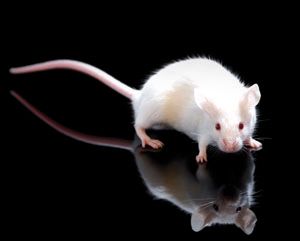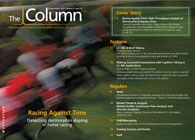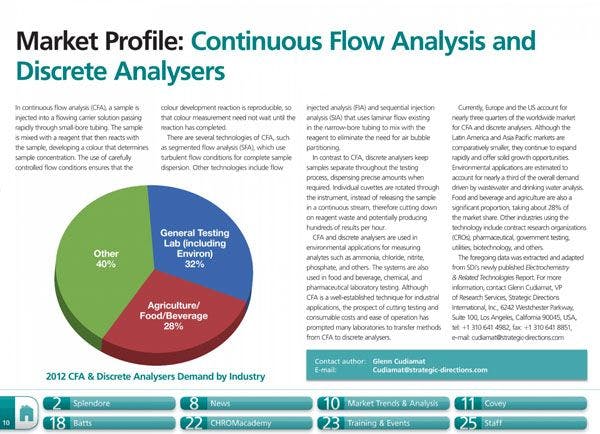Simultaneous Extraction of Metabolites and Lipids
A German/Chinese team led by Rainer Lehmann, of the University of Tuebingen (Tuebingen, Germany) and Guowang Xu, of the DICP (Dalian, China), has developed a method of simultaneously extracting metabolites and lipids using methyl tert-butyl ether (MTBE) from single small tissue samples for analysis by ultrahigh-pressure liquid chromatography–mass spectrometry (UHPLC?MS).

A German/Chinese team led by Rainer Lehmann, of the University of Tuebingen (Tuebingen, Germany) and Guowang Xu, of the DICP (Dalian, China), has developed a method of simultaneously extracting metabolites and lipids using methyl tert-butyl ether (MTBE) from single small tissue samples for analysis by ultrahigh‑pressure liquid chromatography–mass spectrometry (UHPLC–MS).
Studying changes in the metabolism of liver and muscle tissue is essential to furthering the understanding of numerous diseases such as, for example, diabetes. Developments in UHPLC–MS have enabled applications in metabolomics and lipidomic analyses, but sample sizes are restrictive. The average human muscle biopsies are around 50 mg wet weight (15 mg dry weight).
Lehmann told The Column: “The limited amount of human biopsy material or tissue from small animal models like mice is a common challenge, in particular when the aim of the project is the metabolic profiling of chemical ambivalent metabolite classes within one experiment.”
The universal standard sample extraction procedure for metabolomics analysis is to use 80% methanol extraction; however, neutral lipids such as triglycerides require the use of lipophilic solvents. For the extraction of apolar compounds MTBE has been suggested as a substitute for chloroform because it is less hazardous.
The team used a 2:1 ratio of upper (non-polar) to lower (polar) phase. Lipid and lipophilic molecules were extracted to the upper MTBE-rich phase, while polar and semipolar metabolites were extracted to the lower methanol–water rich phase. Amphillic metabolites were extracted to both levels. The mix was also suitable for non‑targeted metabolomics, increasing coverage by 30% relative to using the polar fraction alone.
Lehmann said: “The strength of our application is that it allows the comprehensive investigation of human biopsies and other single small tissue samples, enabling not only simultaneous targeted and non-targeted metabolomics and lipidomics profiling, but also molecular, biochemical, or histological assays in the saved tissue material.” - B.D.
Reference
1. R. Lehmann et al., Journal of Chromatography A1298, 9–16 (2013).
This story originally appeared in The Column. Click here to view that issue.

New Study Investigates Optimizing Extra-Column Band Broadening in Micro-flow Capillary LC
March 12th 2025Shimadzu Corporation and Vrije Universiteit Brussel researchers recently investigated how extra-column band broadening (ECBB) can be optimized in micro-flow capillary liquid chromatography.







